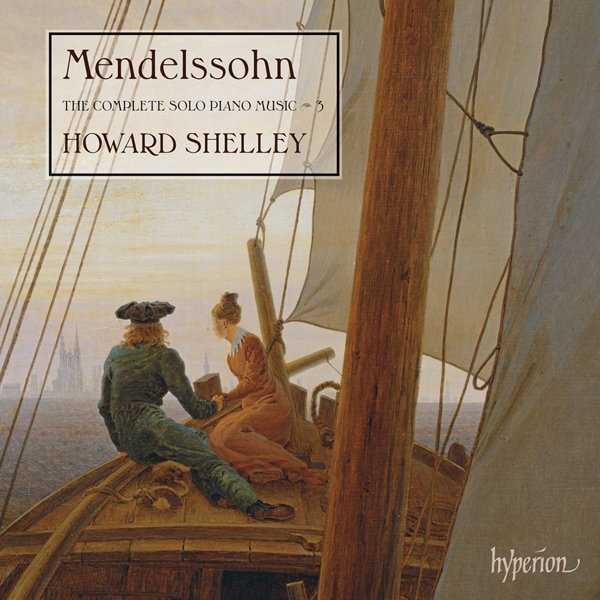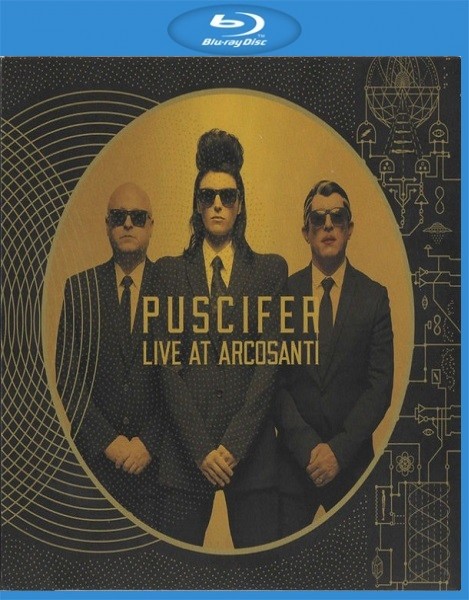
Howard Shelley – The Complete Solo Piano Music, Vol. 3 (2015)
FLAC (tracks) 24 bit/96 kHz | Time – 01:04:27 minutes | 1,04 GB | Genre: Classical
Studio Masters, Official Digital Download | Front Cover | © Hyperion Records
One of the very great pianists of the nineteenth century, Felix Mendelssohn Bartholdy (1809–1847) achieved legendary status for his performances and improvisations alike, though his piano compositions generally have not withstood comparison with the very best keyboard music of the century. The one piano sonata he published was deemed not to have broken new ground after Beethoven’s path-breaking thirty-two; he created no large-scale cyclic works comparable to Robert Schumann’s hybrid literary/musical fantasies for the instrument; his meticulously crafted Lieder ohne Worte exuded for many a refined romanticism not as soul-searching as the miniatures of Chopin or Brahms; and nowhere did his technical demands on the pianist challenge the Promethean exertions of Liszt.
But such views of Mendelssohn’s piano music largely mirrored the conventional wisdom about the composer’s stature engrained over much of the twentieth century. A complex of factors, including a reaction against Victorianism (a frequent visitor to England, Mendelssohn had enjoyed audiences with the Queen, had been embraced as a Victorian gentleman, and was an easy mark for later critiques of the period) and the banning of his music by the Nazis (though a baptized Lutheran, Mendelssohn was the grandson of the Jewish philosopher Moses Mendelssohn), combined to undermine his reputation. And so he was remembered as a purveyor of comfortable (gemütlich) salon music; his affinity for complex Bachian counterpoint led him to rely too much on historical models; and his music betrayed a cloying sentimentality utterly at odds with modernist tastes. Writing in The Musical Times on the sesquicentenary of the composer’s birth in 1959, Stanley Bayliss conceded that Mendelssohn’s music offered ‘magic, charm, clarity, brilliance, verve, lilt, [and] polish’—but all these qualities were not enough to offset this terse verdict of post-War culture: ‘Mendelssohn does not go very deep.’
These attitudes contrasted dramatically with the composer’s meteoric rise to fame during the 1830s and 1840s, and his rapid canonization. An extraordinary child prodigy, he was compared by Goethe and Heine to a second Mozart, and described by Robert Schumann as the Mozart of the nineteenth century. As a composer, he made significant contributions to every important genre of the time, with the exception of opera (though not for want of trying—he reviewed scores of potential libretti, only to settle late in life on Die Lorelei, left unfinished at his death). As a conductor, he turned the Gewandhaus Orchestra in Leipzig into one of the premier musical institutions of his time. As a tireless editor and performer of Bach and Handel, he argued for continuities in the European classical tradition, in which he found again and again the wellspring of his own inspiration. And as a pianist, his elegant style of playing found favour with many critics, including his early biographer W A Lampadius. ‘Mendelssohn’s skill as a virtuoso was no mere legerdemain’, Lampadius wrote in 1865, ‘no enormous finger facility, that only aims to dazzle by trills, chromatic runs, and octave passages; it was that true, manly virtus from which the word virtuoso is derived; that steadfast energy which overcomes all mechanical hindrances, not to produce musical noise, but music, and not satisfied with anything short of exhibiting the very spirit of productions written in every age of musical art. The characteristic features of his playing were a very elastic touch, a wonderful trill, elegance, roundness, firmness, perfect articulation, strength, and tenderness, each in its needed place. His chief excellence lay, as Goethe said, in his giving every piece, from the Bach epoch down, its own distinctive character.’
Today, in the midst of a full-scale Mendelssohn revival, Howard Shelley’s survey of the complete solo piano music in six volumes offers a welcome opportunity to revisit and reassess this repertoire. As we now know, Mendelssohn composed or began nearly two hundred works for piano. Nevertheless, he saw only about seventy through the press, released in seventeen opera from the Capriccio, Op 5 (1825), to the sixth volume of the Lieder ohne Worte, Op 67 (1845). Some twenty-five additional pieces appeared posthumously in eleven additional opera. The remainder, whether fully drafted or fragmentary, were left to his musical estate or have disappeared.
The third volume of Howard Shelley’s recordings of Mendelssohn’s piano music offers works composed over two decades, between 1821 and 1841, and thus connects the remarkable achievements of the student period with Mendelssohn’s music from the noon of fame. The earliest composition is the G minor piano sonata, Op 105 (possessing a deceptively high opus number, for the sonata was published posthumously in 1868, when the progression of works released after his death in 1847, beginning with Op 73, had already reached beyond Op 100); the latest composition is the fourth volume of the Lieder ohne Worte, Op 53.
The Piano Sonata in G minor, Op 105, is among a series of sonatas Mendelssohn wrote during his youthful, student years but elected not to see through the press. In three movements, it features two monothematic sonata-form endpoints framing an expressive, romantic Adagio in the submediant tonality, E flat major. The compact motifs used to generate the outer movements suggest the influence of Haydn (and the conservative instruction of Mendelssohn’s composition teacher, Carl Friedrich Zelter), and reveal that the twelve-year-old had not yet succumbed to Beethoven’s music, which would dramatically affect the young composer’s style just a year or two later. On the other hand, the softly lit Adagio betrays few ties to the eighteenth century. It begins with an expressive leap in excess of two octaves, and much of the movement is filled with blurry, pianissimo arpeggiated textures and subdued washes of sound that explore romantic pedal effects on the piano, and, in particular, the newer technique of the so-called ‘open’ pedal, tentatively explored by Haydn in the 1790s, and then more assertively exploited by a range of nineteenth-century piano virtuosos, including Dussek, Beethoven and Clementi.
With few exceptions—the cycle of Preludes and Fugues, Op 35, and Variations sérieuses, Op 54, forthcoming in volumes 4 and 5, are among them—Mendelssohn tended not to compose large-scale piano works, preferring instead to explore smaller-scale keyboard genres and intimate miniatures. Among them is the diminutive Scherzo in B minor, WoO2, conceived in London in June 1829, not long before Mendelssohn gave the English premiere of his Midsummer Night’s Dream Overture. Like the Shakespearean inspiration, the scherzo is filled with light staccato work in the treble register, and abrupt shifts from the minor to major mode. Unlike his contemporary Chopin, who experimented with expanding the genre of the scherzo, Mendelssohn shrank its dimensions here considerably to elf-like proportions, as if content to say more with less. But in the case of the Scherzo a capriccio in F sharp minor, WoO3 (1835), Mendelssohn did paint on a broader canvas, and explored his tripping, mischievous scherzo style over the course of three hundred bars, which unveil a full-length, madcap movement based on three distinct themes. The work appeared in the 1836 installment of Maurice Schlesinger’s Album des pianists, alongside Chopin’s four Mazurkas, Op 24, and contributions by lesser virtuosi.
Coterminous with the Scherzo a capriccio are the Three Caprices, Op 33 (1836), which elicited from Robert Schumann an imaginative review in the Neue Zeitschrift für Musik. Schumann discerned three contrasting moods in the caprices, ranging from a ‘gentle grief’ in the first, a seductive allure in the second that ‘could make the most faithful of girls unfaithful for a few moments’, to a ‘speechless, restrained wrath’ in the third. Each caprice is prefaced by an introduction that suggests Mendelssohn extemporizing or preluding at the piano, with rising arepggiations over a slowly sinking bass in the first, a few sketch-like chords in the second, and a stately Adagio exordium in the third. All three are linked to fast sonata-form movements that display a variety of keyboard textures—insistent repeated pitches in No 1, pedalled cross-rhythms in No 2, and martellato passages in No 3.
Five years later, in 1841, Mendelssohn published the fourth volume of his Lieder ohne Worte, Op 53, with a dedication to Sophie Horsley, daughter of the English glee composer William Horsley (1774–1858), and elder sister of Charles Edward Horsley, who at the time was studying composition and piano with Mendelssohn in Leipzig. The very first piece of Op 53 had in fact been written for Sophie in 1839, while the second, conceived a few years earlier in 1835, was originally destined for Clara Wieck, whom Mendelssohn had described when he met her at the age of fifteen in 1834 as ‘a bit quiet and shy’ and as playing ‘ganz prachtvoll Clavier’. As in other volumes of his piano Lieder, Mendelssohn offered in Op 53 different types with contrasting keys, tempos and textures, and yet was able to mould the six miniatures into a coordinated whole. The key scheme of the six pieces shows the deft hand of the composer: they begin with flat keys, in descending order from four flats (A flat major) to three (E flat major), two (G minor) and one (F major), then move to the neutral A minor for the penultimate Lied, and conclude with its parallel major with three sharps, A major. In terms of tempos, the six pieces divide into two groups of three each, moving from slow (Andante in No 1, Adagio in No 4) to fast (Allegro in Nos 2 and 5), and very fast (Presto in No 3, Allegro vivace in No 6).
Mendelssohn was characteristically reticent to fit titles to his Lieder ohne Worte, preferring instead to present them just as they were, as autonomous musical statements far more ‘specific’ than the ambiguities of words. Nevertheless, he did publish Op 53 No 5 as a Volkslied—that is to say, it is a piano piece that emulates the qualities and character of folk music, in particular of the Scottish variety. After a brisk introductory flourish, which recurs interlude-like twice more and then again in the coda, we hear the simulated folk tune, presented in chordal style, with a melody not unlike the opening of Mendelssohn’s ‘Scottish’ Symphony, inspired by his visit to Edinburgh in 1829 but finished only in 1843. What is more, Mendelssohn’s newly composed folk melody seems to have inspired Brahms at mid-century. One of the episodes in the finale of his Piano Sonata in C major, Op 1, seems suspiciously derived from it—not only is it in the same key of A minor, but Brahms’s inspiration, according to Albert Dietrich, was Robert Burns’s poem ‘My heart’s in the Highlands’.
Two other Lieder in Op 53 originally had titles that Mendelssohn suppressed upon their publication. No 3 in G minor bears the title Gondellied (Gondola song) in its original autograph, but it is difficult to imagine that Mendelssohn was thinking here of something analogous to his three celebrated Venetianische Gondellieder included in three other volumes of his Lieder ohne Worte. Their gentle barcarolle rhythms and dappled sonorities yield in Op 53 No 3 to assertive, driving rhythms and agitated arpeggiations, though admittedly the accumulated energy of the piece is dispersed at the end in a drawn-out diminuendo and quiet ending. No 4 in F major was originally titled Abendlied (Evening song), certainly appropriate for this quiet, nocturne-like gem, even though Mendelssohn removed this identifying clue. One other piece in the set, the virtuosic No 6, was apparently a response to the piano music of Sigismond Thalberg, Liszt’s rival in the 1830s, who visited Leipzig in 1841 and impressed audiences with chromatic passages alternating rapidly between the hands. According to Charles Edward Horsley, Mendelssohn began experimenting with the device, and approximated it in No 6, with scintillating, piquant chromatic clashes, above which, nevertheless, a lyrical melody sings.
One other work that reveals Mendelssohn addressing issues of virtuosity is the Étude in F minor, WoO1, originally composed in 1836 as a prelude, in all likelihood to introduce the fugue in F minor, the fifth of six fugues eventually assembled in the Preludes and Fugues, Op 35, but then jettisoned from that project. As a standalone piece, the étude eventually saw the light of day in the Méthode des méthodes, a pedagogical work released in 1840 by Ignaz Moscheles and the Belgian music critic F-J Fétis. The basic texture of the étude consists of three layers, a bass line played by the left hand, a series of churning arpeggiations shared by the left and right hands, and a soprano melody projected by the right hand. The design is a variant of another texture explored by virtuosi in the 1830s, the so-called three-hand technique associated with Thalberg, but used by Liszt, Mendelssohn, Fanny Hensel, and other pianists, in which the melody is embedded in the middle register where it is shared by the two hands, while the left and right surround it with a bass line and treble figurations, respectively. Mendelssohn remained sceptical of virtuoso displays for their own sake, but the étude, like the Lied ohne Worte Op 53 No 6, shows that occasionally he did respond to newer fashions of pianism.
The little-known Lied in F sharp minor was composed in Leipzig in 1836 and presumably considered for inclusion in Mendelssohn’s Lieder ohne Worte but nevertheless abandoned as a piano piece. Instead, the composer revived it in London in 1844, when he found an unusual alternative solution for the work. Refashioning the Lied as a Duett mit Worte, he added some newly created verses by his friend Karl Klingemann, and then published the piece as the Herbstlied, Op 63 No 4. The choice of the duet genre is not difficult to explain: the opening melody of the piano piece, doubled in thirds, fits easily into a duet texture for soprano and alto. The sombre tones of F sharp minor suggested to Klingemann a song of autumn, and his verses treat the ideas of transience and loss, of spring turning into winter, of joy into sorrow. This experiment of a piano piece metamorphosing into a texted Lied may be unique in Mendelssohn’s œuvre, but it supports the tantalizing contention of Fanny Hensel that as children the Mendelssohn siblings devised a game in which they added texts to Felix’s piano pieces. –R Larry Todd © 2015
Tracklist:
1. Howard Shelley – Étude in F minor, WoO1 (01:54)
2. Howard Shelley – Scherzo in B minor, WoO2 (01:06)
3. Howard Shelley – Scherzo a capriccio in F sharp minor, WoO3 (06:24)
4. Howard Shelley – Three Caprices, Op 33 – No 1: Adagio quasi Fantasia – Presto agitato (07:27)
5. Howard Shelley – Three Caprices, Op 33 – No 2: Allegro grazioso (07:50)
6. Howard Shelley – Three Caprices, Op 33 – No 3: Adagio – Presto con fuoco (06:17)
7. Howard Shelley – Piano Sonata in G minor, Op 105 – Movement 1: Allegro (06:02)
8. Howard Shelley – Piano Sonata in G minor, Op 105 – Movement 2: Adagio (04:48)
9. Howard Shelley – Piano Sonata in G minor, Op 105 – Movement 3: Presto (04:29)
10. Howard Shelley – Lieder ohne Worte IV, Op 53 – No 1 in A flat major: Andante con moto (03:28)
11. Howard Shelley – Lieder ohne Worte IV, Op 53 – No 2 in E flat major: Allegro non troppo (02:34)
12. Howard Shelley – Lieder ohne Worte IV, Op 53 – No 3 in G minor: Presto agitato (02:20)
13. Howard Shelley – Lieder ohne Worte IV, Op 53 – No 4 in F major: Adagio (02:00)
14. Howard Shelley – Lieder ohne Worte IV, Op 53 – No 5 in A minor ‘Volkslied’: Allegro con fuoco (02:32)
15. Howard Shelley – Lieder ohne Worte IV, Op 53 – No 6 in A major: Molto allegro vivace (02:50)
16. Howard Shelley – Lied in F sharp minor (02:18)
Download:
https://xubster.com/jia8av5vdfur/Mendelss0hnTheC0mpleteS0l0Pian0MusicV0l.3H0wardShelley20159624.part2.rar.html
https://hexload.com/unlulpemjzpa/Mendelss0hnTheC0mpleteS0l0Pian0MusicV0l.3H0wardShelley20159624.part1.rar
https://hexload.com/uxklgvc569hz/Mendelss0hnTheC0mpleteS0l0Pian0MusicV0l.3H0wardShelley20159624.part2.rar






![Piers Lane, Howard Shelley – Williamson: Complete Piano Concertos (2014) [Official Digital Download 24bit/96kHz]](https://imghd.xyz/images/2022/10/18/PsKdW8Y.jpg)
![Howard Shelley, Nuremberg Symphony Orchestra – Tellefsen & Kalkbrenner: Piano Concertos (2024) [Official Digital Download 24bit/96kHz]](https://imghd.xyz/images/2024/01/15/slssq9eaoqghb_600.jpg)
![Howard Shelley – Tellefsen & Kalkbrenner Piano Concertos (2024) [24Bit-96kHz] FLAC [PMEDIA] ⭐️](https://imageurl.xyz/images/2024/01/13/ab67616d0000b2734e6a9d70a462193f4319b472.md.jpg)
![Roberto Prosseda – Gounod Complete Works for Pedal Piano & Orchestra (Hyperion Romantic Piano Concerto 62) (2013) [24Bit-96kHz] FLAC [PMEDIA] ⭐️](https://imageurl.xyz/images/2024/01/13/ab67616d0000b273c9666a8a18de3a752abe9309.md.jpg)
![Howard Shelley, Ulster Orchestra – Steibelt: Piano Concertos Nos. 3, 5 & 7 (2016) [Official Digital Download 24bit/96kHz]](https://imghd.xyz/images/2023/09/11/9EtSwPf.jpg)
![Howard Shelley & Tasmanian Symphony Orchestra – Potter: Piano Concertos Nos 2 & 4 (2017) [Official Digital Download 24bit/96kHz]](https://imghd.xyz/images/2023/08/05/LpGOsuB.jpg)
![Howard Shelley & Tasmanian Symphony Orchestra – Czerny: Piano Concertos (2017) [Official Digital Download 24bit/96kHz]](https://imghd.xyz/images/2023/08/05/6EURWSi.jpg)
![Howard Shelley – Mendelssohn: The Complete Solo Piano Music, Vol. 4 (2016) [Official Digital Download 24bit/96kHz]](https://imghd.xyz/images/2023/06/30/4Z5eKmF.jpg)
![Howard Shelley, Sinfonieorchester St Gallen – Mozart & Clementi: Piano Concertos (2016) [Official Digital Download 24bit/96kHz]](https://imghd.xyz/images/2023/06/06/51CAi5GEWeL.jpg)
![Howard Shelley, London Mozart Players – Kozeluch: Piano Concertos Nos. 1, 5 & 6 (2016) [Official Digital Download 24bit/96kHz]](https://imghd.xyz/images/2023/04/27/m7LdDI0.jpg)
![Howard Shelley & Sinfonieorchester St Gallen – Dupont & Benoit: Piano Concertos (2018) [Official Digital Download 24bit/96kHz]](https://imghd.xyz/images/2023/02/27/OVUXqc6.jpg)
![Howard Shelley – Beethoven: Complete Concertos for Piano and Orchestra (2011/2021) [Official Digital Download 24bit/96kHz]](https://imghd.xyz/images/2023/02/27/v2ohqoso4agfc_600.jpg)
![Howard Shelley, Tasmanian Symphony Orchestra – Godard: Piano Concertos (2014) [Official Digital Download 24bit/96kHz]](https://imghd.xyz/images/2023/02/11/eyJidWNrZXQiOiJwcmVzdG8tY292ZXItaW1hZ2VzIiwia2V5IjoiODA0MDc3OC4xLmpwZyIsImVkaXRzIjp7InJlc2l6ZSI6eyJ3aWR0aCI6OTAwfSwianBlZyI6eyJxdWFsaXR5Ijo2NX0sInRvRm9ybWF0IjoianBlZyJ9LCJ0aW1lc3RhbXAiOjE1NjQ3NDQ4MjZ9.jpg)
![Howard Shelley, Ulster Orchestra – Dussek: Piano Concertos (2014) [Official Digital Download 24bit/96kHz]](https://imghd.xyz/images/2022/12/23/OZcq0Dq.jpg)
![Howard Shelley, BBC Philharmonic Orchestra & Martyn Brabbins – Scott: Piano Concerto, Symphony No. 4 & Early One Morning (2006/2022) [Official Digital Download 24bit/48kHz]](https://imghd.xyz/images/2022/12/01/cn0i475nk81kb_600.jpg)